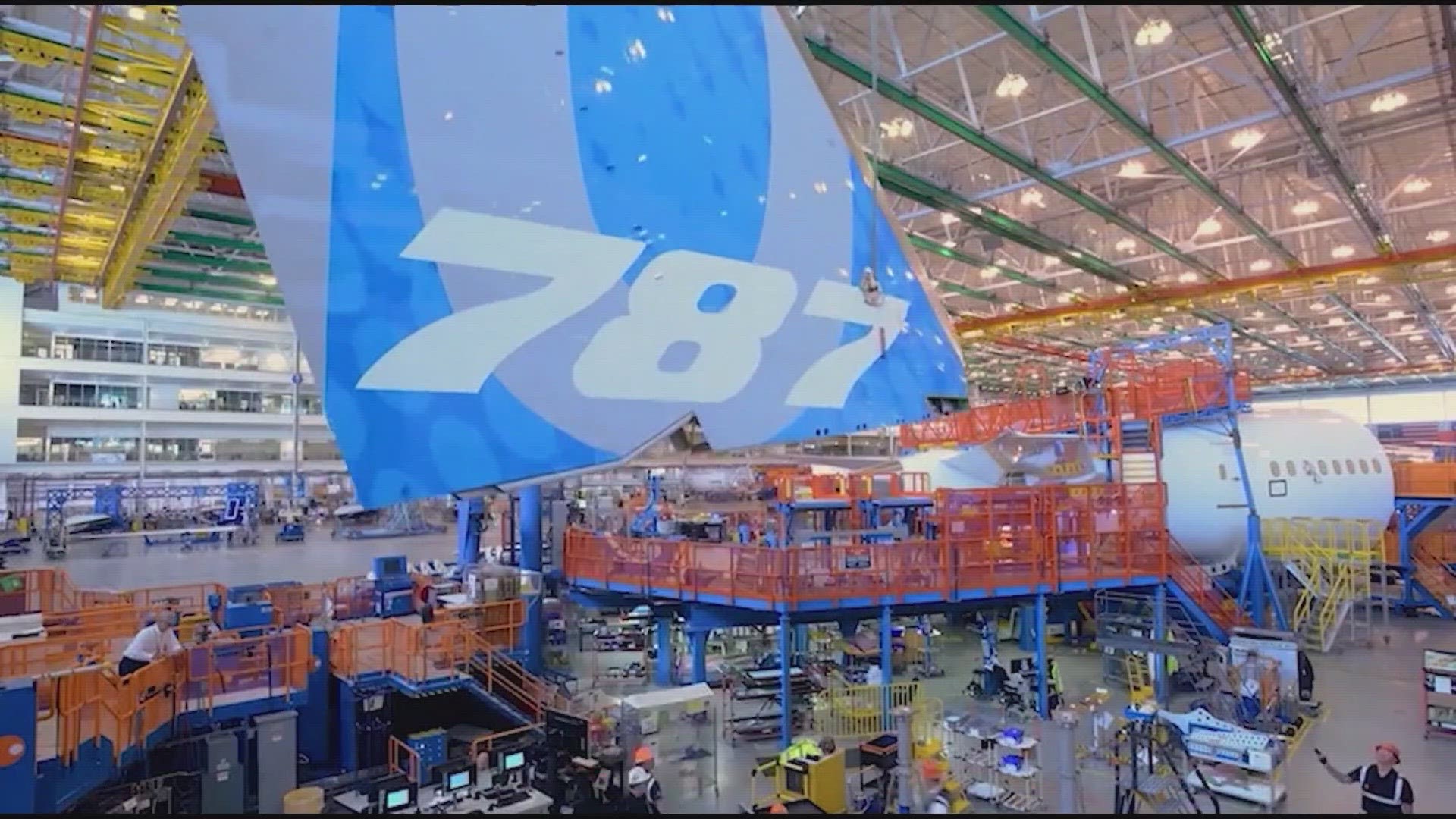EVERETT, Wash. — The Federal Aviation Administration (FAA) is launching an investigation into Boeing’s 787 Dreamliner after a whistleblower stepped forward with concerns about “shortcuts” that could impact the structural integrity of the 787 and 777 planes.
Boeing engineer Sam Salehpour alleges Boeing took the shortcuts when making its Dreamliner jets, affecting nearly 1,000 787s and approximately 400 777s that are still in use, according to a news release from his attorney.
He said he witnessed the process shortcuts the company allegedly implemented to speed up the 787 assembly which "placed excessive stress on major airplane joints, and embedded drilling debris between key joints on more than 1,000 planes."
Salehpour, who has 40 years of experience, warned that the risks could be catastrophic as the planes age, according to his attorneys Debra Katz and Lisa Banks. After raising these concerns, he was “involuntarily transferred” to the 777 program.
In the 777 program, Salehpour also observed other safety concerns about the application and misalignment of the fuselage. Despite these concerns, he claims Boeing pressured engineers to continue production despite the unexamined defects.
Salehpour alleges his direct supervisor and Boeing senior management retaliated against him by threatening to fire him, excluding him from meetings or communication, denied requests for medical leave and assigned work outside of his expertise.
The FAA said the ability to report safety concerns without fear is critical.
“Voluntary reporting without fear of reprisal is a critical component in aviation safety,” the agency’s statement read in part. “We strongly encourage everyone in the aviation industry to share information. We thoroughly investigate all reports."
Boeing countered his claims, saying leaders are fully confident in the 787 Dreamliner and that retaliation is “strictly prohibited.”
“These claims about the structural integrity of the 787 are inaccurate and do not represent the comprehensive work Boeing has done to ensure the quality and long-term safety of the aircraft,” Boeing’s statement read in part.
“The issues raised have been subject to rigorous engineering examination under FAA oversight. This analysis has validated that these issues do not present any safety concerns and the aircraft will maintain its service life over several decades. We continue to monitor these issues under established regulatory protocols and encourage all employees to speak up when issues arise," Boeing continued.
The company said 787s can safely fly for at least 30 years before needing maintenance routines to extend its life.
In early January, a panel that plugs a gap left for an extra emergency exit blew off an Alaska Max 9 as it flew 16,000 feet over Oregon. The plane safely landed and no one was injured.
Alaska quickly grounded its other Max 9s, and the FAA followed by grounding all Max 9s in the United States – affecting Alaska and United Airlines. The FAA and National Transportation Safety Board are investigating, and the Justice Department is examining whether the incident violated terms of a settlement that Boeing reached in 2021 to avoid criminal prosecution for allegedly misleading regulators who certified Max jets for flights.

